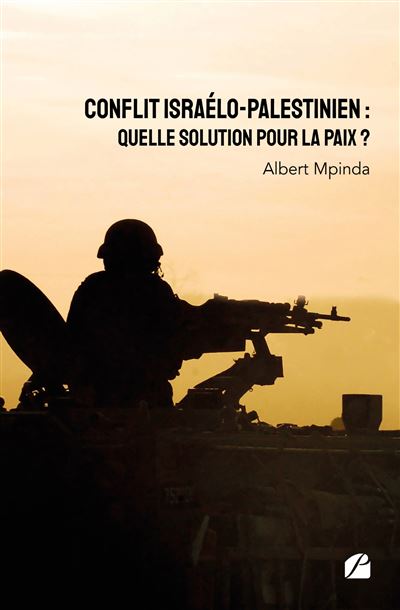The Geopolitical Fallout Of Trump's Middle Eastern Tour

Table of Contents
Reshaping Alliances and Regional Power Dynamics
Trump's tour significantly altered the landscape of Middle Eastern alliances and power dynamics, leaving lasting imprints on regional relationships.
Shifting Sands in the Saudi-US Relationship
The tour witnessed a strengthening of the Saudi-US relationship, primarily fueled by substantial arms deals and increased military cooperation. This deepened partnership aimed to counter Iran's regional influence and combat terrorism. However, this strengthened relationship also raised concerns about potential increased regional instability due to Saudi Arabia's enhanced assertiveness.
- Increased military sales: The Trump administration approved billions of dollars in arms sales to Saudi Arabia, bolstering its military capabilities.
- Strengthened counter-terrorism cooperation: Joint efforts against terrorist organizations, particularly ISIS, were intensified, leading to increased intelligence sharing and military coordination.
- Potential for increased regional instability: The increased military might of Saudi Arabia, coupled with its assertive foreign policy, raised concerns among some regional players about potential escalations and conflicts.
Strained Relations with Iran
Trump's tour marked a distinct hardening of the US stance against Iran. His administration adopted a more confrontational approach, significantly escalating tensions. This was evident in his rejection of the Iran nuclear deal and the imposition of harsh sanctions.
- Increased sanctions: The re-imposition and expansion of sanctions crippled Iran's economy, further isolating it from the international community.
- Heightened regional tensions: The assertive US policy fueled regional instability, with heightened proxy conflicts and a significant increase in the risk of military confrontation.
- Potential for military conflict: The increased tensions significantly elevated the risk of direct military conflict between the US and Iran, a scenario with potentially catastrophic consequences.
- Impact on regional trade and energy markets: The sanctions and heightened tensions had a considerable impact on regional trade and energy markets, disrupting supply chains and affecting global oil prices.
Impact on Other Regional Actors
The Trump Middle East tour's effects extended beyond Saudi Arabia and Iran, impacting relationships with Egypt, Turkey, and the UAE. The shifting alliances and levels of US support influenced the regional balance of power.
- Changes in US aid and military support: The level of US aid and military support varied across different regional actors based on their alignment with Trump's policies.
- Impact on political stability: The shifts in alliances and support affected the political stability of several countries, impacting internal conflicts and power dynamics.
- Shifts in regional influence: The changing relationship with the US altered the regional influence of various countries, leading to new power dynamics and potential conflicts.
The Arab-Israeli Conflict and Peace Process
Trump's tour significantly impacted the already fragile Arab-Israeli peace process. His controversial decision on Jerusalem sparked widespread condemnation and further inflamed tensions.
Trump's Jerusalem Declaration and its Consequences
The recognition of Jerusalem as Israel's capital was a highly controversial move, significantly impacting the peace process and regional stability. The decision triggered widespread protests and condemnation from the international community.
- Increased tensions: The declaration exacerbated tensions between Israelis and Palestinians, fueling violence and hindering peace negotiations.
- Setbacks in peace negotiations: The decision served as a major setback for the already stalled peace negotiations, further diminishing prospects for a two-state solution.
- Impact on regional stability: The move destabilized an already volatile region, increasing the risk of broader conflicts.
- Protests and violence: The declaration sparked widespread protests and violence, highlighting the deep-seated divisions and sensitivities surrounding the issue.
Impact on the Two-State Solution
The Trump administration's policies cast serious doubt on the viability of the two-state solution, the long-standing framework for resolving the Israeli-Palestinian conflict.
- Challenges to achieving a lasting peace agreement: The lack of progress and the controversial policies significantly hampered efforts to achieve a lasting peace agreement.
- Implications for Palestinian statehood: The prospects for an independent Palestinian state appeared increasingly remote in the wake of the tour and subsequent policy decisions.
The Fight Against Terrorism and ISIS
Trump's Middle Eastern tour also impacted the fight against terrorism, particularly against ISIS. While the tour led to a reassessment of counter-terrorism strategies, the long-term effectiveness remains debatable.
Impact on the Counter-Terrorism Strategy
Trump's tour signaled a shift in US counter-terrorism strategies, potentially impacting the fight against ISIS and other terrorist groups.
- Shift in military focus: The focus shifted towards empowering regional partners and reducing direct US military involvement.
- Impact on ISIS: While ISIS lost significant territory, the long-term impact on the group's capabilities and ideology remains to be seen.
- Challenges in addressing the root causes of terrorism: The new approach faced challenges in addressing the underlying issues fueling terrorism, such as poverty, political grievances, and sectarian conflict.
Regional Security Concerns
The geopolitical fallout of Trump's Middle Eastern tour significantly impacted regional security, leaving a volatile environment.
- Increased risk of terrorist attacks: The changing power dynamics and heightened tensions increased the risk of terrorist attacks and other forms of violence.
- Impact on civilian populations: The instability and conflict directly affected civilian populations, resulting in displacement, casualties, and humanitarian crises.
- Regional instability: The tour's consequences significantly contributed to the ongoing instability and unpredictability within the region.
Conclusion
Trump's Middle Eastern tour had a profound and lasting impact on the geopolitical landscape of the region. The reshaping of alliances, the strained relations with Iran, the setbacks in the peace process, and the continued fight against terrorism are all direct consequences. Understanding the geopolitical fallout of Trump's Middle Eastern tour is crucial for comprehending the current complexities and predicting future developments in this volatile region. Further research and analysis are necessary to fully grasp the long-term implications of this pivotal moment in Middle Eastern history. Continue to explore the complexities of the Trump Middle East tour and its lasting consequences by researching further into the specific details of each event and its repercussions.

Featured Posts
-
 Onet Premium Fakt W Promocyjnej Ofercie
May 18, 2025
Onet Premium Fakt W Promocyjnej Ofercie
May 18, 2025 -
 No Deposit Bonus Codes May 2025 A Comprehensive List
May 18, 2025
No Deposit Bonus Codes May 2025 A Comprehensive List
May 18, 2025 -
 Htb Alhrb Wwqe Alsrae Altwyl Ela Alaqtsad Alealmy
May 18, 2025
Htb Alhrb Wwqe Alsrae Altwyl Ela Alaqtsad Alealmy
May 18, 2025 -
 Celebrity Only Fans Accounts Amanda Bynes Latest Move
May 18, 2025
Celebrity Only Fans Accounts Amanda Bynes Latest Move
May 18, 2025 -
 Le G7 Et Le Conflit Israelo Palestinien Silence Sur La Solution A Deux Etats
May 18, 2025
Le G7 Et Le Conflit Israelo Palestinien Silence Sur La Solution A Deux Etats
May 18, 2025
